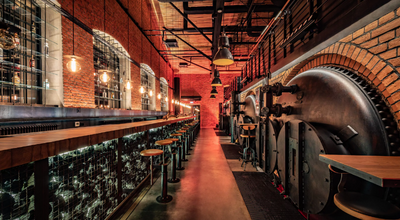The Polish Vodka Day is fast approaching! On January 13, we will celebratean important day for Polish Vodka, joining French cognac and Scottish whisky on the list of Protected Geographical Indications. According to a survey conducted by the Polish Vodka Foundation, only one in three Poles know that Poland is the cradle of this drink*. The Polish Vodka Museum helps in building national pride.
Poland is the largest producer of vodka in the European Union, and fourth largest worldwide, after Russia, the USA and Ukraine. Furthermore, there is irrefutable historical evidence to indicate that our country is the cradle of vodka. This fact, however, is not common knowledge, as indicated by the results of a Kantar TNS* survey commissioned by the Polish Vodka Foundation, involving more than 500 local and foreign visitors to Warsaw last summer. 61% of the respondents thought that Russia was the motherland of vodka, with 33% of the surveyed Poles recognizing Poland in this capacity, 15% of visitors from Germany, 17% of those from the UK, and 20% of those from France. The Polish Vodka Museum wants to change these statistics, and build on our awareness of this national drink, of which we should all be proud, just as the Scottish are proud of whisky and the French of cognac.
The definition of Polish Vodka, which has already been binding for almost six years (since 13 January 2013), after its amendment, specifies in detail which vodkas can use the “Polska Wódka / Polish Vodka” Protected Geographic Indication. First, only five traditional Polish cereals can be used to make it (wheat, rye, triticale, barley and oats) or alternatively it can be made from potatoes cultivated in marvelous Polish soil. Second, in addition to the origin of the raw materials, all stages of the production process (except for bottling) must take place in Poland. Only alcoholic beverages which meet these criteria can be called Polish Vodka. Its centuries-long and rich tradition, as well as the production process, are revealed to you at the Polish Vodka Museum, located on the former premises of the “Koneser” vodka factory, in the Praga-Północ district of Warsaw.
DID YOU KNOW THAT…
Rumor has it that 10,000,000 liters of vodka were spilled onto a street in Warsaw in 1915. This baffling event took place on Ząbkowska Street. The perpetrators were Russian soldiers, who on having to leave Warsaw in 1915, received an order to destroy the complete stock of this alcohol stored in Ząbkowska Street.
In the past, people in Warsaw often gorged on trotters in jelly served with two shots of Polish Vodka. This was popularly known as “binoculars with jelly fish”, and at the time was a very typical appetizer!
The Palace of Culture and Science in Warsaw is 237 meters high. In order to build a tower of the same height, you would need to find about 846 half-liter bottles of Polish Vodka.
Keep up to date on all the news about Polish Vodka. Become a fan of the Museum of Polish Vodka and follow us on Facebook and Instagram.
* The survey was conducted by Kantar TNS, commissioned by the Polish Vodka Foundation, using a questionnaire completed by people visiting Warsaw in August and September
























